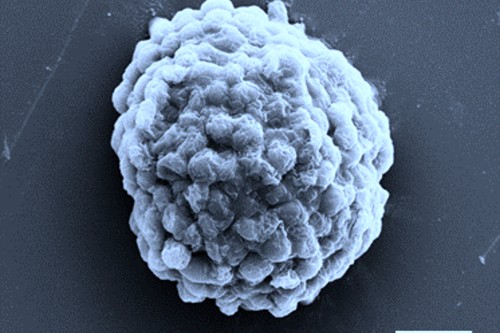
Aside from electricity, hydrogen is also considered a promising alternative energy source for the future. However, due to its complex and energy-intensive production, it has so far played only a minor role in comparison to electricity. An international research team from the University of Bristol (England) and the Harbin Institute of Technology (China) have now proposed a new method for producing hydrogen. They use ‘tiny microbial reactors based on droplets.’
These “micro-reactors” are algae that generate hydrogen instead of oxygen when exposed to daylight in the air.
Lack of oxygen is the key
Normally, algae cells absorb carbon dioxide and convert it into oxygen through photosynthesis. In this study, sugar-rich droplets packed with living algae cells were used to produce hydrogen through photosynthesis instead of oxygen. For its project, the team, comprising Professor Stephen Mann and Dr. Mei Li from the Bristol School of Chemistry. and Professor Xin Huang and colleagues from the Harbin Institute of Technology, collected about 10,000 algal cells in sugar-rich droplets. These droplets were then compacted by means of osmotic compression. This allowed the algae to accumulate in the center, where the oxygen concentration is very low.
This lack of oxygen caused special enzymes, known as hydrogenases, to become active in the algae. These enzymes set the photosynthesis process in motion. This is because the algae absorb the oxygen from the water to compensate for the oxygen shortage. What remained was hydrogen. “In this way, around a quarter of a million microbial factories, typically only one-tenth of a millimeter in size, could be prepared in one milliliter of water,” the researchers explain in the press release. In order to accelerate hydrogen production, the scientists used a thin layer of aerobic bacteria, which increased the number of algae cells in the droplets.
Simple and flexible method
The work is still in its early stages. Yet according to the scientists, it marks a step towards the photobiological development of green energy produced under natural aerobic conditions. “Using simple droplets as vectors for controlling algal cell organization and photosynthesis in synthetic micro-spaces offers a potentially environmentally benign approach to hydrogen production that we hope to develop in future work,” said Professor Stephen Mann, co-director of the Max Planck Bristol Centre for Minimal Biology.
Moreover, the method is simple and “should be capable of scale-up without impairing the viability of the living cells,” emphasizes Professor Xin Huang of the Harbin Institute of Technology. “It also seems flexible. For example, we recently captured large numbers of yeast cells in the droplets and used the microbial reactors for ethanol production.”
The team has published the results of their research in the article ‘Photosynthetic hydrogen production by droplet-based microbial micro-reactors under aerobic conditions‘ in the academic journal Nature Communications.’
Title picture: Electron microscope image of a densely packed droplet of hydrogen-producing algae cells. Scale bar, 10 microns. © Prof. Xin Huang, Harbin Institute of Technology.

